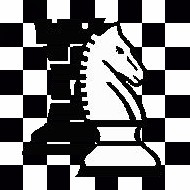
CHATRANJ COMPOSITION
Problémistes Marocains
Par
Mohamed Jamal Elbaz
Federation Royale Marocaine des Echecs - FRME

|
|
CHATRANJ COMPOSITION Problémistes Marocains Par
Mohamed Jamal Elbaz Federation Royale Marocaine des Echecs - FRME
|
|

2nd FRME #2 Award
Juge : Dr. Paz Einat, International FIDE Judge
I thank the organizers for inviting me to judge this tourney. I received 22 anonymous problems for evaluation and selected 8 of them for the award.
Three more problems were excluded due to anticipations and other reasons as follows: Youness, Ben Jelloun: Black king’s star with a key granting two flights was done many times – see for example the 1894 problem by Edith Baird (A) with a key granting three flights! Other works show this with four different mates after the black king moves (see B as an example). The most valuable problems of this type are those with set mates ready for the two black king moves as done by Guglielmo & Luigi Mai (C) with two mate changes. Youness Ben Jelloun & Andreas Nievergelt: The block threat is nice but similar unpin key with more interesting play, some of it similar, was done several times, D being one example. Abdelaziz ONKOUD (Rd8/Rb4): Mate changes after Pelle movement are well-known. Zagoruiko form was shown as early as 1954 and later even without all mates being unpin mates (but with a flight giving key; see E).
Prize: Viktor Syzonenko
The Radical Changes between try 1.Sf5? and solution are connected by the royal battery play and the threats: both reappear after specific defenses (1...Qxg3 in the try & 1...Qg6+ in the solution). The unpin key and use of the royal battery in both phases, as well as the Rook/Knight battery play in the solution, leave a good impression. The set play and other tries mentioned by the author are irrelevant in my opinion.
|
|
1.Sf5? ~ 2.Kg6 A #
|
1st Honourable Mention: Pavel Murashev (Russia)
One of two similar problems (possibly by the same author) working along the WCCT10 theme. I find the execution here preferable as the theme is shown in a clearer way and the changes are better. There is a function change of the Sc4 mate and several changes after the BR correction play, but with Bd6 being the only mate in the try 1.Se8?.
|
|
1.e:d3? [2.Sc4 A #]
|
2 nd Honourable Mention: Petro Novitsky (Ukraine)
There are three mate changes after 1...Bg8, three after 1...Sxc3 and additional two changes after 1...Sxd4 making this almost a 3x3 Zagoruiko. The changes following the BS defenses are wellknown (see F) but there are enough additional elements here to deserve a place in the award.
|
|
1...Bg8 a 2.Qg6 # (1...g5 2.Q*h7 #)
|
3 rd Honourable Mention: Valery Shanshin
Change of function: the mates on the two black-king moves to the flight squares, granted by the key, appear as 1st move (Bb8) and threat (S:g6) in the try play. Additionally, there is both a transfer and function change of the mate Qe3. There is some resemblance to G and some lack of unity to my taste.
|
|
1…R:d6 2.Qе3 X #
|
1 st Commendation: Zoltan Labai
A classical style mutate with a good key but WRd1 is a pity. I did not find any anticipations..
|
|
1…g4 a 2.Qxf4# |
2 nd Commendation: Abdelaziz ONKOUD (Maroc)
Interesting logical play: the two unpins defeat the try on c7 and only one of them defeats the further two tries. The move to f4, covering both g4 & g5 works.
|
|
1.Dç7? [2.Th6‡]
|
3 rd Commendation: Miroslav Svítek Mělník, (Czech Republic)
A nice mix of mate changes and transfers but I have a feeling that this matrix could have been better exploited.
|
|
1…B:c4 a 2.Bd4 A #
|
4 th Commendation: Luis Gómez (Spain)
Good tries by the white bishop with the other two threats always existing as variation mates.
|
|
1.Be3 ? [2.Sf4 A #] |
Appendix:



